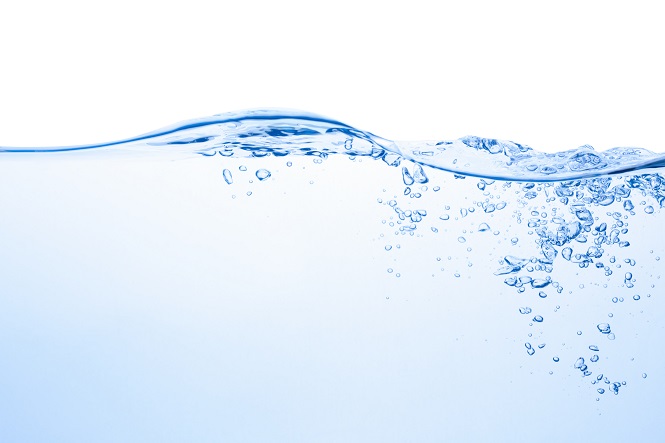
I have always been intrigued with the idea of putting a greywater system in our home, and since moving to California, the idea has seemed even more relevant and attractive. There was a
sobering op-ed recently in the LA Times written by Jay Famiglietti, a UC Irvine professor and senior water scientist at the NASA Jet Propulsion Laboratory/Caltech, about the state of our region’s water supply. Famiglietti wrote that at this moment California has “only about one year of water supply left in its reservoirs, and our strategic backup supply, groundwater, is rapidly disappearing.” This is almost inconceivable to me and a sure sign that we all need to be better at conserving the water we do have.
According to
Greywater Action, a site dedicated to teaching people about ways to reduce water use, greywater is “gently used water from your bathroom sinks, showers, tubs and washing machines. It is not water that has come into contact with feces, either from the toilet or from washing diapers.” They go on to remind us that while greywater may look like it’s not clean, it is a “safe and even beneficial source of irrigation water in a yard.”
Some things to consider when thinking about a greywater system:
- Unless you’re considering a greywater system for a business or apartment complex where you will need a storage system and filtration system for the volumes of water that are used each day, you should make your system as simple as possible. Simple systems will last longer, require less upkeep, use less energy and be more cost-efficient. Such systems can include utilizing gravity rather than pumps and avoiding costly filters.
- Greywater systems must be designed with care, as they could be potentially unsafe in some situations. To reduce risk, if you are using your greywater system for irrigation in a garden, it should be set up to deliver the water below the soil surface. Do not put greywater onto the edible part of plants. Since greywater is not safe to drink, it should not touch the part of a plant that would be eaten.
- Any greywater system should also have a three-way valve, which would allow wastewater to be routed back through the sewer or septic system as needed.
- In any greywater system, it is important to avoid toxic cleaning products like bleaches, artificial dyes, chlorine-based cleansers and so on. Use biodegradable products that are salt and boron free. The Ecology Center has a wonderful Guide to Greywater-Compatible Cleaning Products.
Larger plants are better suited to be irrigated with a simple greywater system than smaller plants, according to Greywater Action. Choose the larger plants like trees, bushes, berries, shrubs and larger perennials or annuals. The organization explained it is more difficult to water many smaller plants that are covering a large area with a simple greywater system.
As always, when making changes at your home, check with your local municipality for any regulations or code that you should consider before you begin to design your greywater system. Some states encourage greywater recycling, but others may not.
 I have always been intrigued with the idea of putting a greywater system in our home, and since moving to California, the idea has seemed even more relevant and attractive. There was a sobering op-ed recently in the LA Times written by Jay Famiglietti, a UC Irvine professor and senior water scientist at the NASA Jet Propulsion Laboratory/Caltech, about the state of our region’s water supply. Famiglietti wrote that at this moment California has “only about one year of water supply left in its reservoirs, and our strategic backup supply, groundwater, is rapidly disappearing.” This is almost inconceivable to me and a sure sign that we all need to be better at conserving the water we do have.
According to Greywater Action, a site dedicated to teaching people about ways to reduce water use, greywater is “gently used water from your bathroom sinks, showers, tubs and washing machines. It is not water that has come into contact with feces, either from the toilet or from washing diapers.” They go on to remind us that while greywater may look like it’s not clean, it is a “safe and even beneficial source of irrigation water in a yard.”
Some things to consider when thinking about a greywater system:
I have always been intrigued with the idea of putting a greywater system in our home, and since moving to California, the idea has seemed even more relevant and attractive. There was a sobering op-ed recently in the LA Times written by Jay Famiglietti, a UC Irvine professor and senior water scientist at the NASA Jet Propulsion Laboratory/Caltech, about the state of our region’s water supply. Famiglietti wrote that at this moment California has “only about one year of water supply left in its reservoirs, and our strategic backup supply, groundwater, is rapidly disappearing.” This is almost inconceivable to me and a sure sign that we all need to be better at conserving the water we do have.
According to Greywater Action, a site dedicated to teaching people about ways to reduce water use, greywater is “gently used water from your bathroom sinks, showers, tubs and washing machines. It is not water that has come into contact with feces, either from the toilet or from washing diapers.” They go on to remind us that while greywater may look like it’s not clean, it is a “safe and even beneficial source of irrigation water in a yard.”
Some things to consider when thinking about a greywater system: